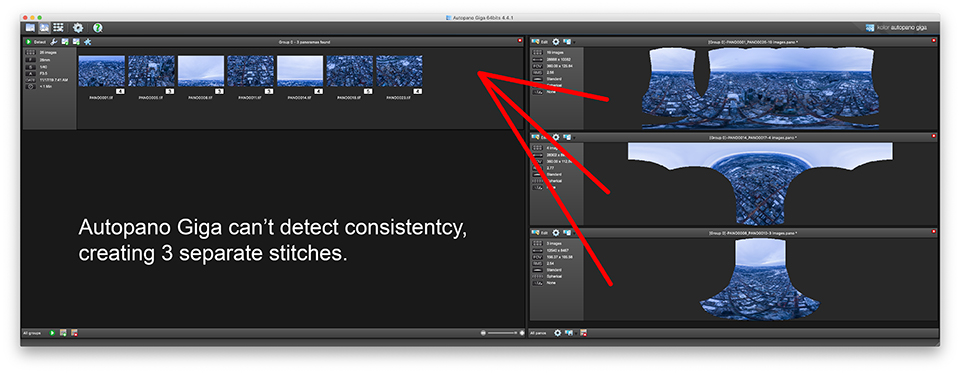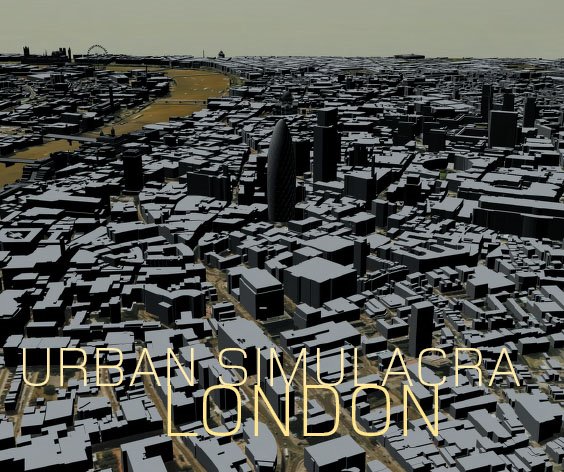


This 4th attempt has worked fine, but oddly enough the finished file size is shown as 4.73GB. Anyway, I couldn't find a way of opening the file so I had to begin the rendering again, a fourth time, selecting the PSB format and being very sure I specified 8 bit. I'm sure I clicked on the 8 bit option before rendering but for some reason the saved TIFF file was 4.11GB which appeared to be 16 bit, or maybe that's due to the alpha channel. I therefore felt safe in using the TIFF file format which has a size limit of 4Gb. I'd calculated that 103 x 24MB images should not be larger than 2.5GB at most. However, the third obstacle was the file size.

There was no power cut and the stitched, rendered file seem to have been saved okay. I'm connected to a UPS and the computer shut down nicely, but I had to start the rendering a third time when the power came back on. There was a bit of thunder and lightning and the usual power cut. The second obstacle occurred about 4 hours into the rendering. I had to close the program, after renaming the path of the temporary folder, and start again.
#Ptgui vs autopano free#
When I attempted to render the image (after it took an hour or so for the preview to be created) I got a message to the effect that my hard drive had only 24Gb of free space when 44GB was required. The first obstacle was a lack of space on the hard drive I had allocated for the temporary scratch folder. Because the process was automatic, it didn't worry me too much when things didn't go quite to plan. I recently tried stitching with Autopano 103 images taken with my 20D, 3 rows of 33-35 images. I've now put it all back on, sitting in front of the computer, processing images and chatting to people on LL.īefore getting Autopano I was fearful of the effect that even more time sitting in front of the computer would do to my overweight situation, especially with huge 100 image projects. I had no difficulties with this pano - it is hand-held with the Samyang 14 mm - one row.I agree completely. This one is recognized by google as a panorama, so google enables its panorama viewer. This one can be zoomed - it could have been exported up to Yes there can be issues - sometimes it is necessary to insert extra control points or even horizontal-line control points.Īpart from that I am quite happy with PTGUI that I have used for many years. I have had PTGUI assemble 9 images deep TIFF hdrs in a panorama of a dozen or so images without any problem.
#Ptgui vs autopano series#
and shutter speed - if they don't becaus ethe camera was on auto - then you need to just edit your hdr series - then they are recognized properly. there is a trick to HDR - PTGUI only recognizes series of hdr images by them having identical Fno. The main thing I like is the "save and forget" batch stitcher. The newest version supports the graphical processor. I have just stitched 14 x 36Mpix images shot with Samyang 14mm on nikon D800 and it stitches fast. Sorry I can't offer any info on Autopano giga, never tried it. There's also a nice tutorial series on youtube for doing 360x180 spherical panoramas I ended up getting PTGui after watching these, so it might give you a good idea if PTGui is what you're after. It's fully automated and works quite well, though I didn't get good results doing spherical panos, perhaps you'll have better luck.
#Ptgui vs autopano software#
I personally use PTGui, though I have not really used it enough to justify the cost yet (and my nodal ninja 3 is sitting mostly unused as well.).īefore you go buying commercial software, there are two free options you can try first:īefore I bought PTGui, I used Microsoft ICE to stitch a large number of cylindrical panoramas that I'd never managed to get looking right with the stitching software that came with my old Canon S20.


 0 kommentar(er)
0 kommentar(er)
